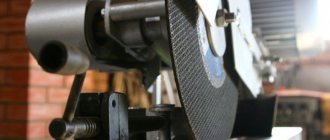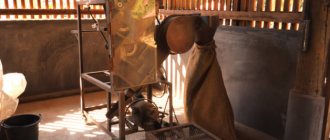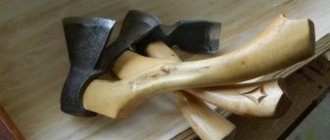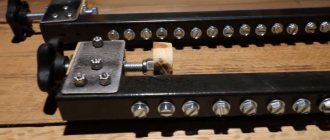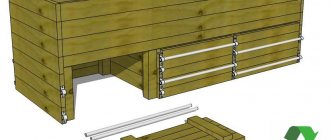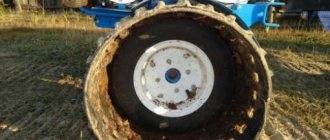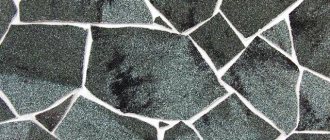Recently, energy resources are considered to be of great value, so people are trying to find alternative energy sources everywhere.
Recycled sawdust, leaves, or other agricultural waste can make excellent fuel. But in order to turn them from garbage into useful material, it is necessary to use a special installation - a briquette press.
Recycled sawdust has recently become more and more popular as an alternative energy source.
general information
A press for the production of briquettes consists of several units and mechanisms.
These include the following parts:
- The table (base) to which the remaining components are attached, including the matrix that forms the future fuel.
- Power frame fixed to the base. Its task is to transfer force through the punch to the material.
- Mechanical or manual drive. In the first case, a hydraulic booster or electric motor is considered, and in the second, muscle power or an additional jack are considered.
Before you start using the press, you need to understand the principle of its operation and areas of application.
The advantages of the power structure are obvious:
- It allows you to create inexpensive raw materials with good energy value and high density.
- With its help, you can provide yourself with affordable fuel for heating your room throughout the cold season. For homeowners located far from gas mains, or people who want to save money on heating, this solution is completely justified.
This is what industrially pressed wood into briquettes looks like
However, it is recommended to manufacture the mechanism in the presence of a solid fuel boiler or stove, as well as in the availability of raw materials. The efficiency of the equipment and its benefits for private households depend on these two factors.
Pros and cons
The main advantage of such installations is the low cost of the briquettes, which are used as fuel. With the help of such products you can heat a woodworking shop or set up autonomous heating for a greenhouse. Processed plant waste is capable of generating an impressive amount of thermal energy, providing worthy competition for many types of fuel. As a result, the manufacture of presses is becoming increasingly relevant and in demand.
Another advantage of fuel created using such equipment is its low ash content. As a result of the combustion of briquettes, organic ash appears without harmful impurities and additives, so it is often used as a fertilizer for the soil.
The automatic system with vertical design for the production of fuel briquettes is a compact automatic unit of continuous operation
The disadvantages include the high hygroscopicity of the final product , so it must be stored in special conditions where there is no moisture. The strength of compressed waste is inferior to other solid fuels, which leads to the formation of dust during the operation of briquettes. This dust often causes an allergic reaction in consumers, and if it accumulates in large volumes, it leads to the creation of an explosive and fire-hazardous mixture.
Among the key types of industrial equipment are:
- automatic systems;
- semi-automatic installations;
- models for small-scale production.
Installations can be hydraulic, pneumatic or screw. There are also models with vertical or horizontal design.
How to make a press for fuel briquettes with your own hands:
Briquette production technology
Understanding how to make a briquette press yourself is relatively simple. To do this, you need to adhere to general recommendations and follow the step-by-step guide.
The task of such a mechanism is to grind the feedstock, which is usually used as waste from woodworking enterprises, as well as its further drying. To make fuel from wood waste, its moisture content must be brought to 8-10%. In addition to plant components, coal dust is also used to produce briquettes.
After preparing the necessary components, you can proceed directly to the production of briquettes using one of two technologies:
- Pressing. In this case, the raw material must be placed in a special form, called a matrix, and crushed using a powerful hydraulic press. The part that acts on the raw material is called a punch. The machine itself is capable of developing pressure up to 300-600 atmospheres.
- Extrusion. According to the principle of operation, a professional extruder resembles a screw meat grinder. The feedstock passes through a narrowing channel, and the pressure that affects it is about 1000 atmospheres.
Technology for producing briquettes on an industrial scale through pressing.
With strong compression, the prepared mass is heated to high temperatures. Sticky substances are released from small particles of material, which begin to bind the mass and make it solid. The density of raw materials reaches 900-1100 kg/1 m³. For comparison, for high-quality wood they are 500-550 kg/1 m³. The processed mass acquires a high thermal potential, and its energy value doubles.
Such briquettes burn several times longer than ordinary wood. As a result, they go through a heat treatment stage, they are cut into equal parts and delivered to the warehouse.
Faced with the issue of producing fuel from waste, many people have a dilemma between buying factory equipment and making a press for fuel briquettes with their own hands according to drawings.
Drawings of a screw press for sawdust
Share on social media networks:
Many modern privatized houses are equipped with solid fuel heating systems, which involve the use of coal and firewood. Such heating boilers will also usually operate on pellets and fuel briquettes, which are made from wood waste. To increase the energy efficiency of alternative fuel, it is subjected to compression using special equipment that you can make yourself. For this you will need high-quality and detailed drawings of a sawdust screw press, which can be found in special books or on the Internet. Let us consider step by step the specifics of the design of this equipment and assembly in this article.
Advantages of homemade structures
The cost of an industrial press for making briquettes ranges from 300 thousand to 1 million rubles. Few people are willing to shell out that amount of money, so making your own machine is becoming increasingly important. And it is not advisable to buy such an expensive mechanism for your own household needs, since its return on investment is very low.
As for homemade presses, it is quite possible to make them at home. In this case, you can try to build the system from scratch or purchase several units for assembly.
According to the scheme, it is quite possible to make a homemade press machine at home
When considering the option of manufacturing from scratch, you need to acquire the following compression mechanisms:
- With a lever.
- Screw mechanism.
The first device is characterized by a simple design, and it can be made from ordinary wood. As for screw mechanisms, they imply the presence of steel blanks and a lathe. A screw extruder, which is more complex in terms of production, is also created by hand, but for this purpose you have to buy expensive, high-class steel.
Heating a room with briquettes made from vegetable waste is not only cheap, but also environmentally friendly. This is explained by the absence of harmful additives and impurities in the fuel. To install a heating system, you can use a homemade pellet boiler or slightly modernize a ready-made solid fuel installation.
Problem of choice
Before purchasing an industrial unit, most buyers naturally have questions: “Which type is better to choose?” “Should I buy new or used equipment?” “Cheap or expensive?” Let's take a brief look at the three main options.
1. New turnkey installation.
Read also: Steel 304 and 430 differences
2. Used line.
3. Buy parts from different manufacturers and assemble them yourself on site.
Each of these options has its pros and cons, but before considering them, you should familiarize yourself with the theoretical part.
Manufacturing based on other devices
If there is no desire to create a press for making briquettes from scratch, then you can try to rework some other device for such a mechanism. This can be a jack or a small hydraulic press, which is additionally equipped with a punch and a die.
It is important to understand that all home-made installations are not capable of providing the pressure at which lignin production occurs. As a result, a number of third-party additives are added to the original mass, including:
- inexpensive adhesive (for example, for wallpaper);
- clay (for 1 part of raw materials take 10 parts of waste);
- soggy paper or corrugated cardboard.
When producing a machine for briquettes, it is important to take into account such a stage as grinding raw materials. Manual cutting of the material is not recommended, since such manipulation takes a lot of time and effort. Instead, it is recommended to use additional devices, for example, a shredder from an old activator washing machine, into which knives are placed. You can also buy a rotary machine. Its task is to grind plant components.
Another important point is the grinding of raw materials; manual cutting of the material is not recommended, since such manipulation takes a lot of time and effort.
To successfully manufacture a lever or screw press, you do not need to purchase additional parts. However, such devices do not have special operating properties. A press made from a hydraulic jack, on which an electric or manual drive is installed, will be more effective.
A punch is added to the finished equipment, the dimensions of which are comparable to the dimensions of the matrix where the pressing takes place. To create the matrix, take a thick-walled pipe in which holes are made for the ventilation system. The matrix is additionally equipped with a removable bottom - it can be removed after receiving the finished briquette.
Materials and available tools
To make a briquette press with your own hands, you need to stock up on some materials and available tools. In addition to the main component, you will also have to buy different types of rolled steel:
- channel;
- corner measuring 100x100 mm;
- a sheet 3-6 mm thick from which you will need to cut a punch. The thickness of the workpiece is determined by the diameter of the matrix.
It is also necessary to prepare a pipe with a cross-section of 25-30 mm for the manufacture of the punch rod, a thick-walled pipe for the matrix and a larger one for the body. In the absence of such material, the drum can be created from a sheet of tin. Also, galvanized steel is prepared for the upcoming work - trays are created from it.
The machine is assembled according to the following instructions:
- Equip the base of the device. It is created from channels using a welding machine.
- Based on the angle, four 1.5 m long posts are made. They are welded vertically with the same pitch.
- Next, a drum is created from a steel pipe or sheet of tin, where the feedstock will be mixed. If you have a broken washing machine in your house, you can remove the drum from it.
- The drum structure is then welded to the racks. If possible, it is better to equip it with an engine. If the power plant creates strong vibrations during operation and its rotation speed is too high, this can be solved using a gearbox.
- A tray is installed under the drum through which the raw materials will be fed into the matrix.
- At the bottom of the matrix there is a flange to which a removable bottom is screwed. It will require a steel sheet.
- Then you need to weld or screw the matrix to the base.
- A round punch is cut from a sheet of steel. Instead, you can use a regular disk of suitable diameter.
The briquetting press is designed for the production of fuel briquettes from soft and hard wood sawdust, sunflower husks and other plant waste
Useful tips
Although using a homemade press it is unlikely that it will be possible to produce a high-density briquette, it is quite enough for heating rooms in the cold season. The installation solves the main problem with a bang - the crumbly loose raw material becomes a solid brick or a cylindrical mass, which is then placed in a solid fuel boiler.
In order for the creation of a hydraulic press for the production of fuel briquettes to be justified, you need to take into account a lot of factors. First of all, it is important to make sure that the raw materials are available and cheap. You should also evaluate the weighted average volume of material received, the type of waste used and your own need for solid fuel. If heating with briquettes allows you to significantly save money, then making a press is a good solution with a long-term perspective.
Necessary equipment
As it becomes clear from the technology described above, to produce briquetted fuel you will need appropriate equipment, which is easy to make with your own hands. The main device is a press, which ensures the formation of a briquette from a crumbly raw material mass, characterized by a dense and uniform internal structure. A screw, lever or hydraulic mechanism can be used as a force body, with the help of which pressure will be applied to the raw materials used to produce fuel briquettes.
- drive mechanism, which, as mentioned above, can be screw, lever or hydraulic;
- a supporting frame on which all structural elements of the device are fixed;
- a matrix in the internal cavity of which a fuel briquette is formed from a loose raw material mass;
- a punch through which pressure is applied to the raw material mass;
- mixing drum (all components included in the raw material mass are mixed in it);
- trays designed for loading raw materials into the matrix and unloading finished products from its working chamber.
Scheme of a homemade impact machine with an electric drive
3D model of the shock-mechanical part of a press for the production of briquettes
To make briquettes from sawdust or any other suitable raw material, one press is not enough: this will also require auxiliary equipment:
- a crusher, with the help of which pre-cleaned raw materials will be crushed to fractions of the required size;
- mesh trays on which the finished briquettes will be dried;
- a ventilation unit necessary to remove the resulting dust from the raw material grinding zone.
Homemade biomass chopper based on an electric drill with a mixer attachment
You can produce Euro firewood yourself not only using screw, lever or hydraulic pressing equipment, but also using other types of technical devices. In particular, it is possible to use briquetting equipment of the impact-mechanical and extrusion type.
Like screw and lever type devices, briquetting equipment operating on the shock-mechanical principle belongs to the category of the least expensive in terms of self-production. When using such equipment, as when using screw and lever type devices, the produced fuel briquettes are not very dense, which makes them not very resistant to high humidity and significantly reduces their heat transfer level. In addition, such briquettes for heating, characterized by a rather loose internal structure, are unstable to mechanical damage, which eliminates the possibility of their transportation over significant distances.
Factory-made press VT60
The technology, which involves the use of extruder-type pressing equipment, is used primarily for the production of Euro-firewood in production conditions. A fuel briquette made using such equipment is characterized by a dense internal structure and, accordingly, high resistance to mechanical damage. When using extruder equipment, the pressure on the pressed raw material is exerted by a screw, which, rotating, moves the bulk mass to the holes of the matrix and pushes it through them. As a result, dense bars of cylindrical or hexagonal shape are formed.
Hydraulic press Green-440 for the production of briquettes RUF
To produce fuel briquettes using an extruder press, you do not need to add binders to the raw material. Such equipment, due to the peculiarities of its design, is capable of providing enormous pressure on the pressed raw materials, as a result of which the natural substance lignin is released from the latter, which acts as a binding component.
If you decide to make this type of pressing equipment with your own hands, keep in mind that this is a rather expensive undertaking, as it requires the use of expensive materials and special devices. That is why the option of independently manufacturing extruder-type pressing equipment is not often considered by home craftsmen.

